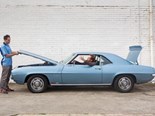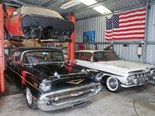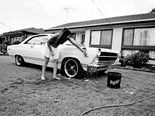Tips: How to test drive a classic car
 Tips: How to test drive a classic car
Tips: How to test drive a classic car

 Tips: How to test drive a classic car
Tips: How to test drive a classic car

 Tips: How to test drive a classic car
Tips: How to test drive a classic car

 Tips: How to test drive a classic car
Tips: How to test drive a classic car

 Tips: How to test drive a classic car
Tips: How to test drive a classic car

 Tips: How to test drive a classic car
Tips: How to test drive a classic car

 Tips: How to test drive a classic car
Tips: How to test drive a classic car

 Tips: How to test drive a classic car
Tips: How to test drive a classic car

 Tips: How to test drive a classic car
Tips: How to test drive a classic car

 Tips: How to test drive a classic car
Tips: How to test drive a classic car

 Tips: How to test drive a classic car
Tips: How to test drive a classic car

 Tips: How to test drive a classic car
Tips: How to test drive a classic car


|
|
Tips: How to test drive a classic car
|

|
|
Tips: How to test drive a classic car
|

|
|
Tips: How to test drive a classic car
|

|
|
Tips: How to test drive a classic car
|

|
|
Tips: How to test drive a classic car
|

|
|
Tips: How to test drive a classic car
|

|
|
Tips: How to test drive a classic car
|

|
|
Tips: How to test drive a classic car
|

|
|
Tips: How to test drive a classic car
|

|
|
Tips: How to test drive a classic car
|

|
|
Tips: How to test drive a classic car
|

|
|
Tips: How to test drive a classic car
|
Classic car buying expert Ross Vasse shares his tips for test driving a potential purchase

|
|
Tips: How to test drive a classic car
|
How to test drive a classic car
In last month’s issue (#351 - read more here) classic car-buying expert Ross Vasse showed us how to thoroughly inspect a vehicle from bumper to bumper. Now it’s time to learn how to properly perform a classic car road test, so that you can make an informed decision on whether to make an offer to buy or if you should let it go through to the keeper.
THE ROAD TEST
Continuing on from the inspection and having warmed the engine to normal operating temperature, it’s time to take the car for a spin. Quickly check the fuel gauge before taking off as the last thing you need is to run out of fuel. When road testing, it’s best to have the seller accompany you. This will enable you to chat about issues as they arise during the test drive.
On a manual car, test the clutch for slippage. Set the handbrake, depress the clutch, engage first gear and begin to release the clutch as if driving away. The car should stall immediately. If it doesn’t and the handbrake is holding, the clutch is worn. You can also check the clutch by accelerating briskly in third gear. Should the engine over-rev in relation to the car’s speed, then the clutch is slipping.
Selecting gears should be smooth and easy, without any grinding. If grinding is present it can indicate worn gear linkages or a worn gearbox.
With an automatic, check the up-shift for smoothness during acceleration. Slowing down to a walking pace, accelerate hard, down-shifting to first gear and pushing the gearbox through its course of high-low-high shifting. The gear changes should be smooth with no slips or jerking. On either transmission, be certain to check reverse gear, which is commonly overlooked.
Whilst driving, keep an eye on the temperature gauge and oil pressure levels. Should the oil pressure drop considerably (or if a low pressure light comes on), you’ve got big problems. If the car had exceptionally high oil pressure at start-up and then dipped after warming, be cautious, as the seller may have used an oil additive to mask the problem. Look for smoke in the rear view mirror; if there is smoke on acceleration, it’s more than likely there’s piston ring wear. Smoke on deceleration is usually an indicator of valve guide wear.
Being mindful that you’re clear of traffic on a straight road, release the steering wheel (keeping your hands nearby) and apply the brakes. If the car veers left or right, it can indicate a wheel alignment or brake adjustment issue. If there is a vibration within a certain speed range, then the tyres may need balancing. A vibration felt in the seat is usually from the rear wheels; vibrations in the steering are from the front wheels.
Make mental notes while driving the car. How does the engine feel? Does it hesitate when accelerating or decelerating, and does it respond properly throughout the rev range? How does it compare to other cars of the same make and model? Are the brakes tight? Steering precise? Does it feel comfortable to drive? Do the odometer, speedometer, tachometer and other gauges work?
Once you’ve completed the road test, allow the car to idle for a few minutes to see if any fluids begin to leak. Then, shut the car off and check under the bonnet. Scan for fumes, hissing, steam, smoke or anything out of the ordinary. Then restart the engine, checking the gauge readings. The car should start easily and return to a normal idle.
Turn the car off again. Take another good overall look at the car while it cools to see if you notice anything new. Check the tailpipe to see what type and colour the deposits are just inside the pipe. Light grey to tan shades are just fine. A black, oily deposit spells trouble. Ask the owner, "How much oil does the car consume?"
The inspection and road test will take you about an hour to perform, but could save you thousands of dollars in repairs. The inspection and test drive has nothing to do with trusting the owner, because he may not have known about what you’ve discovered. If an overlooked, but needy repair does surface, and it doesn’t turn you away from the car, use it to negotiate a better deal.
After all this, if you’ve assessed the car as worth buying, only then should you consider negotiating a better deal. If it’s not worth buying, politely say it needs a little more work than expected, and walk away.
If you’re unable to perform an inspection and road test yourself, and don’t have a friend who can help you, then consider engaging the services of a professional organisation, which specialises in pre-purchase inspections for older vehicles, as a safeguard.
If you would like a free ‘old car’ price guide, or seek to learn more about classic cars, visit www.rossvasse.com.au.
Unique Cars magazine Value Guides
Sell your car for free right here
Get your monthly fix of news, reviews and stories on the greatest cars and minds in the automotive world.
Subscribe

.jpg)












